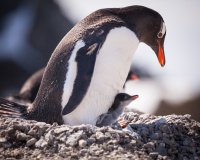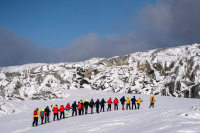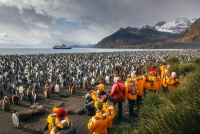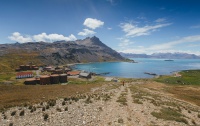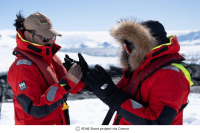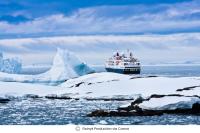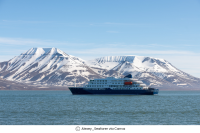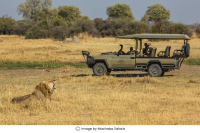-
Travel to Antarctica: Guide to Explore Orcas in the Weddell Sea
The Weddell Sea, one of the most remote and pristine regions of Antarctica, offers a unique opportunity to observe one of the ocean's most formidable apex predators—the orca. Antarctica is a great feeding ground for the orcas and it is said that half of the world’s population (about 25,000) reside here. These intelligent and social creatures are not just a spectacular sight but are also key players in the marine ecosystem. For those venturing into these icy waters, understanding the behavior of orcas can enhance the experience and provide insights into the lives of these fascinating animals. This guide will help you spot and understand orcas in the Weddell Sea, giving you all the more reasons to travel to Antarctica! Read along to know why exploring the orcas in the Weddell Sea should top your things to do in Antarctica!
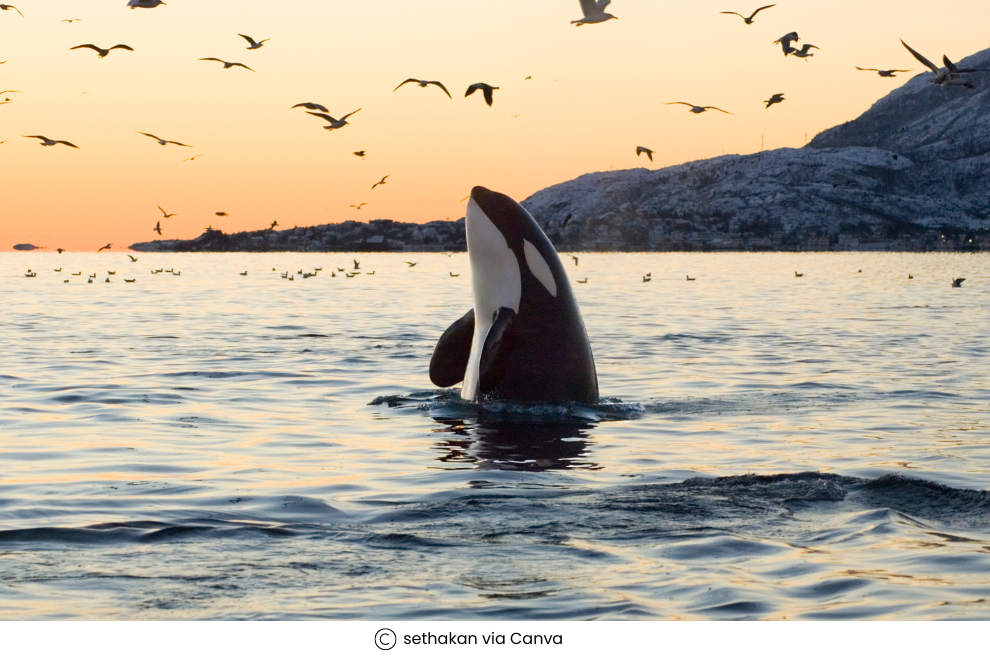
Why are Orcas also known as Killer Whales?
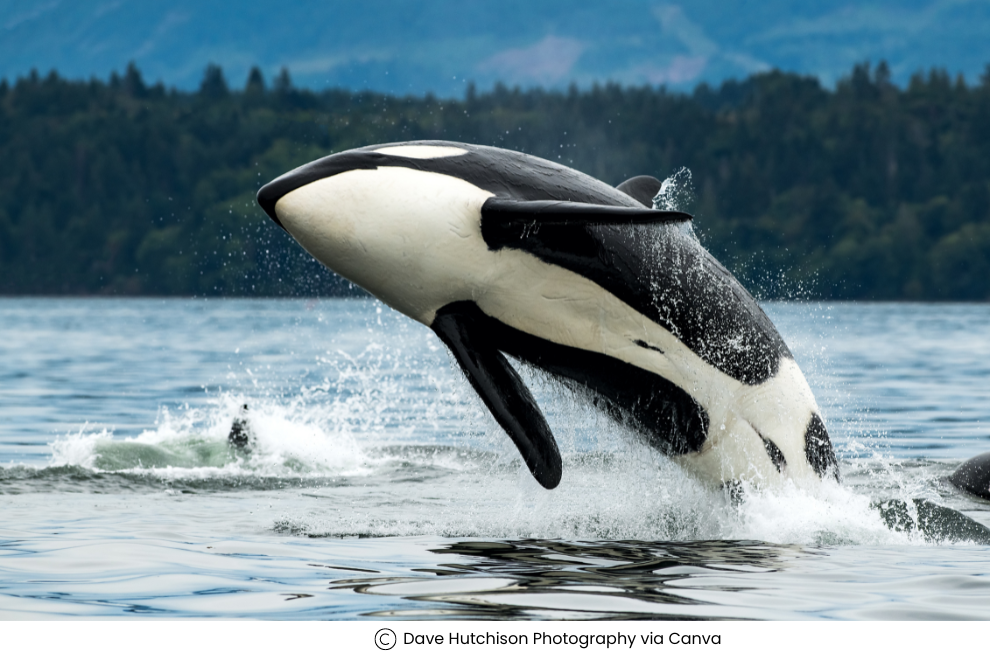
Derived from the Latin word, ‘orca’, meaning a type of whale or a large vessel, gets its name as ‘killer whales’, from the ancient sailors who witnessed their ruthless hunting and killing behaviour of other marine animals. They are powerful predators, sitting at the top of the food chain, making them apex predators, with no natural predators. They prey on fish, seals, sharks, and even other whales!
Now, you might be thinking from their name that they belong to the whale family, but that’s the surprise! They actually belong to the dolphin family, the largest member of the same. They are highly intelligent and social animals, often hunting in coordinated groups or "pods" to take down large prey. Despite the intimidating name, orcas are not a threat to humans in the wild, and there have been very few incidents involving orcas and humans. The name "killer whale" reflects their formidable hunting skills rather than a threat to people.
Killer whale physical characteristics and appearance
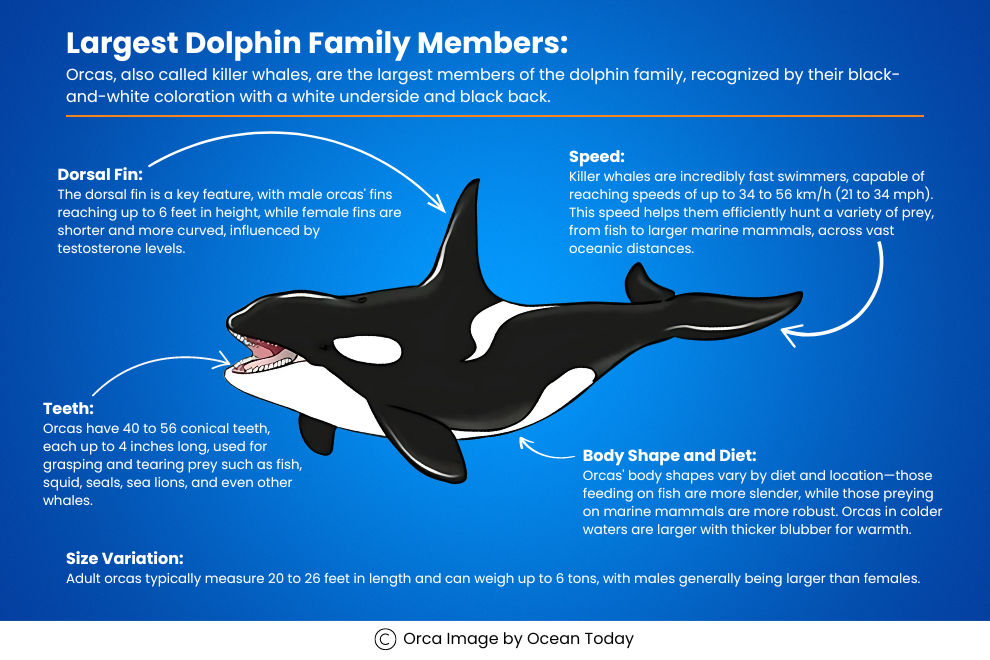
Largest Dolphin Family Members: Orcas, also called killer whales, are the largest members of the dolphin family, recognized by their black-and-white coloration with a white underside and black back.
Size Variation: Adult orcas typically measure 20 to 26 feet in length and can weigh up to 6 tons, with males generally being larger than females.
Dorsal Fin: The dorsal fin is a key feature, with male orcas' fins reaching up to 6 feet in height, while female fins are shorter and more curved, influenced by testosterone levels.
Teeth: Orcas have 40 to 56 conical teeth, each up to 4 inches long, used for grasping and tearing prey such as fish, squid, seals, sea lions, and even other whales.
Body Shape and Diet: Orcas' body shapes vary by diet and location—those feeding on fish are more slender, while those preying on marine mammals are more robust. Orcas in colder waters are larger with thicker blubber for warmth.
Speed: Killer whales are incredibly fast swimmers, capable of reaching speeds of up to 34 to 56 km/h (21 to 34 mph). This speed helps them efficiently hunt a variety of prey, from fish to larger marine mammals, across vast oceanic distances.
Different types of orcas in the Weddell Sea
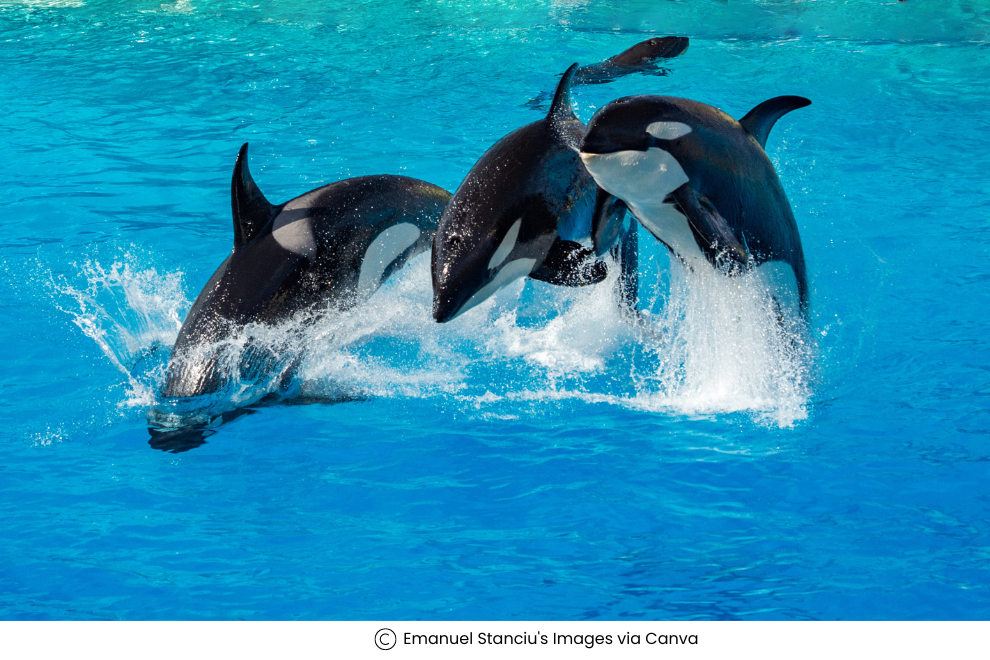
Type A Orcas:
- Appearance: Large and typically have a bold black-and-white coloration.
- Diet: Primarily hunt large baleen whales, such as minke whales.
- Habitat: Usually found in open waters of the Southern Ocean, including the Weddell Sea.
Type B Orcas (Pack Ice Orcas):
- Appearance: Medium-sized with a yellowish or brownish tint due to diatom algae on their skin.
- Diet: Mainly hunts seals, often by creating waves to knock them off ice floes.
- Habitat: Inhabit the pack ice regions of the Weddell Sea.
Type C Orcas (Ross Sea Orcas):
- Appearance: Smaller in size with a more grayish coloration and a diagonal eye patch.
- Diet: Primarily feed on fish, particularly Antarctic toothfish.
- Habitat: Usually found closer to the Antarctic continent, including the Weddell Sea, and are often seen near the Ross Sea.
When and Where to Spot Orcas
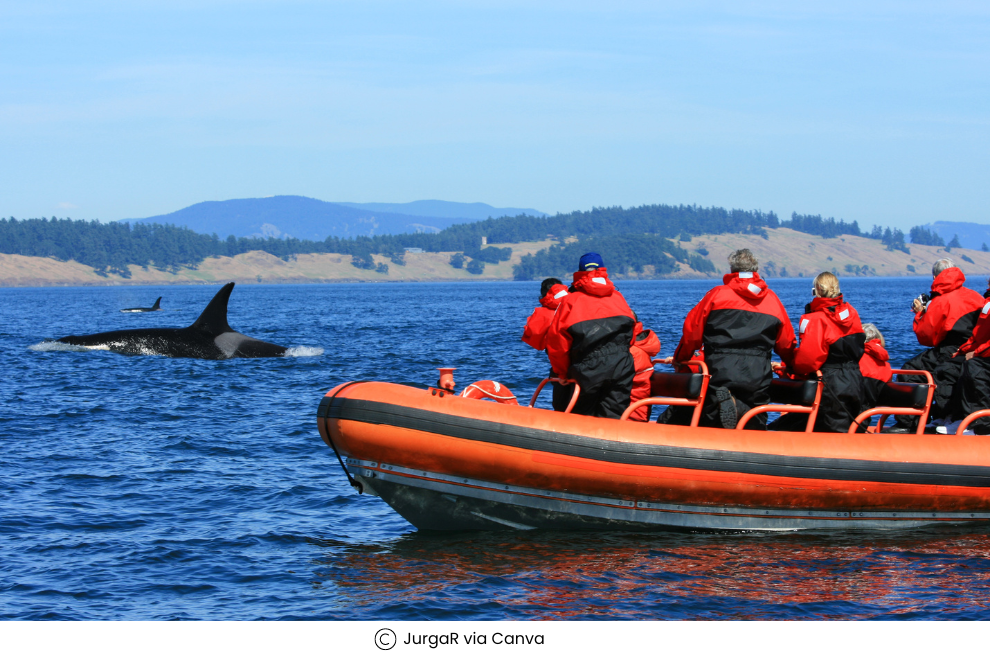
Orca sightings in the Weddell Sea are more likely during the Antarctic summer months, from November to March, when the sea ice recedes and marine life becomes more active.
The best chance to spot these magnificent creatures is in areas with open water and along the edges of sea ice, where orcas often hunt for prey such as seals, penguins, and fish.
Expeditions to the Weddell Sea typically include Zodiac boat trips, where you might encounter orcas close to the ice floes.
Understanding Orca Behavior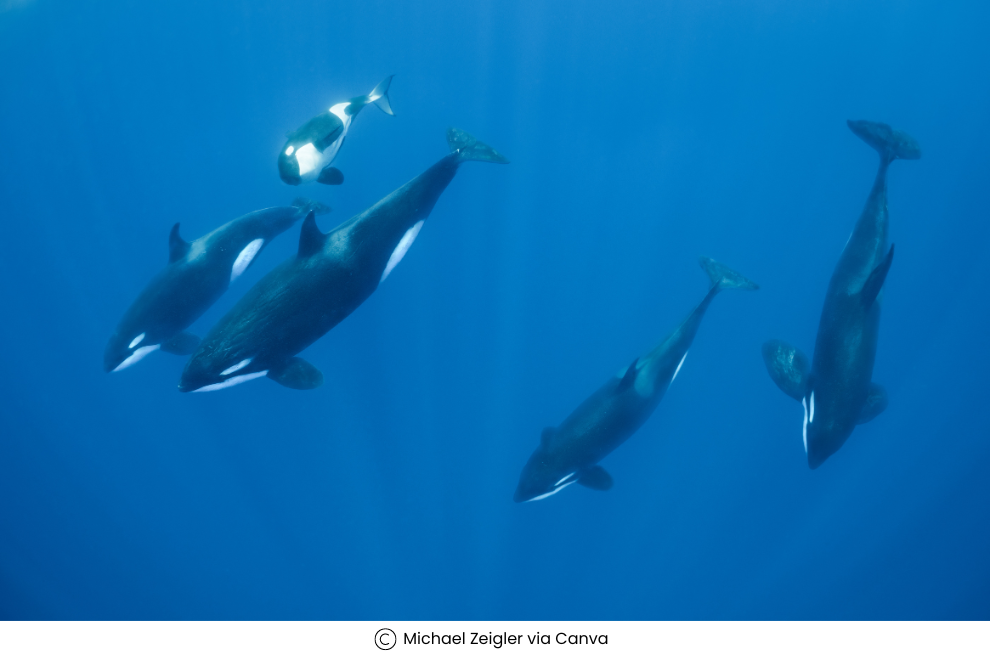
Orcas in the Weddell Sea are highly social and often travel in pods, which can range from just a few individuals to over a dozen. These pods are usually composed of family members, with strong bonds that influence their hunting and social behaviors.
Observing a pod's structure and interactions can reveal a lot about their social dynamics. For instance, you may notice coordinated hunting strategies, where the pod works together to corner prey—a testament to their intelligence and teamwork.
Feeding and Hunting Techniques
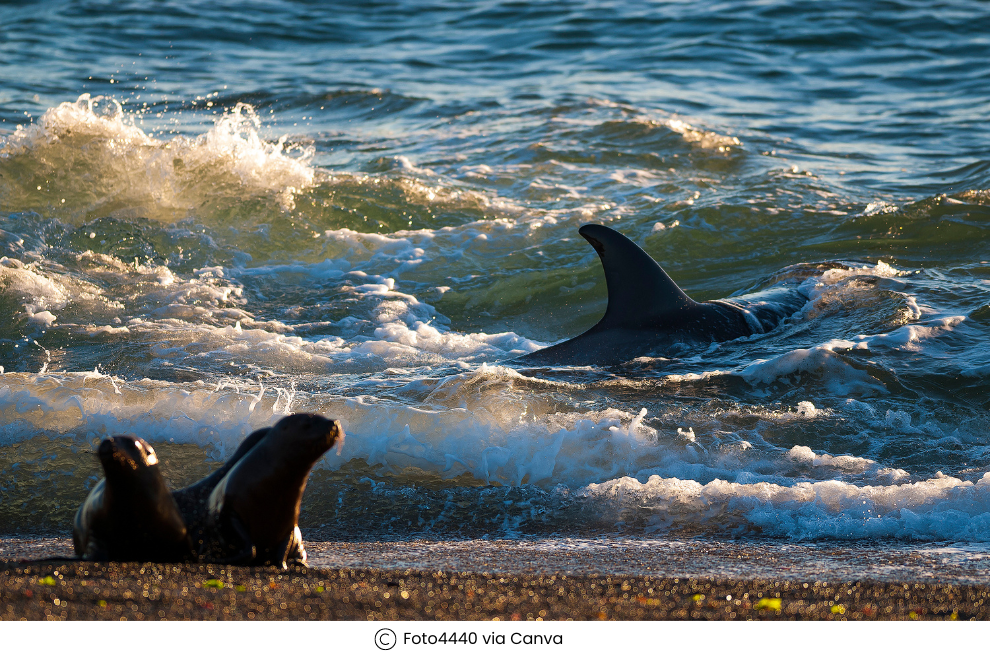
The orcas of the Weddell Sea are known for their sophisticated hunting methods. One of the most intriguing behaviors to observe is the "wave-wash" technique, where orcas create waves to knock seals off ice floes. This cooperative hunting method is a remarkable display of their problem-solving abilities.
Additionally, orcas use echolocation to locate prey, emitting clicks and listening for the echoes that bounce back from objects, allowing them to hunt even in low-visibility conditions.
Interactions with Other Marine Life
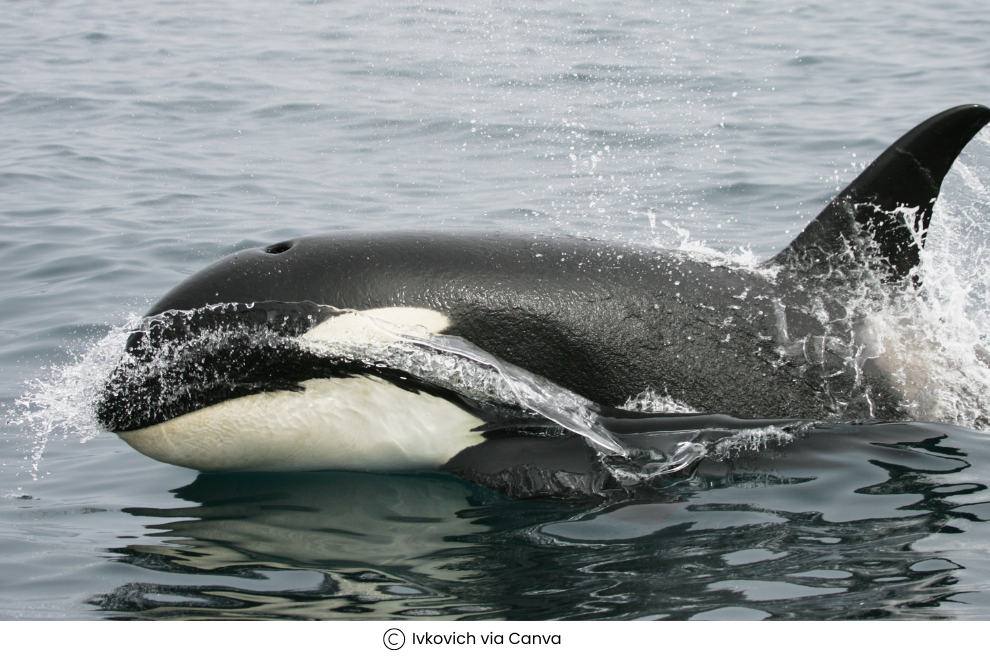
Orcas are apex predators and their presence can significantly impact the behavior of other marine species.
In the Weddell Sea, you might observe how the presence of orcas influences the movements of seals, penguins, and even other whales. For instance, seals might stay close to the ice edge or on top of ice floes to avoid predation, while other whales might alter their course to steer clear of orca pods!
Exploring Weddell Sea
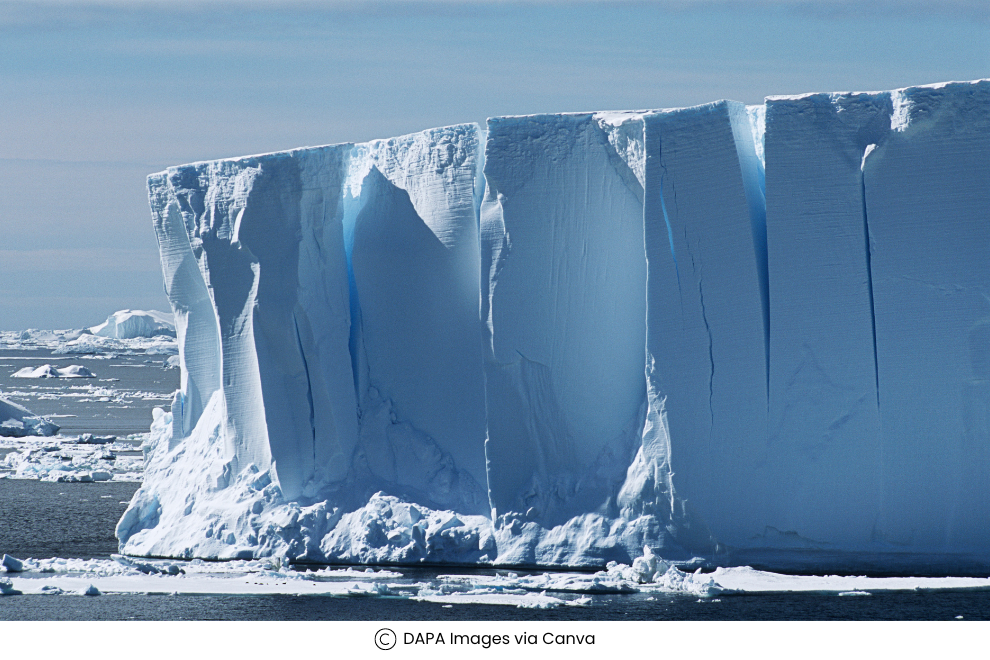
Some interesting activities you can engage in and around Weddell Sea:
- Iceberg Sightseeing: Marvel at towering icebergs and stunning ice formations
- Wildlife Watching: Spot seals, penguins, and a variety of seabirds in their natural habitat
- Zodiac Excursions: Explore the icy waters up close on small, guided boat tours
- Antarctic History Tours: Visit historic sites and learn about early Antarctic explorers
- Snowshoeing: Trek across pristine snow-covered landscapes for a unique polar experience
- Photography: Capture the breathtaking scenery and unique wildlife of the Antarctic region
Spotting orcas in the Weddell Sea is an unforgettable experience that offers a rare glimpse into the lives of one of the ocean’s most skilled predators. By understanding their behavior, recognizing their social structures, and respecting their natural habitat, you can fully appreciate the complexity and majesty of these apex predators. While setting on such a once in a lifetime experience, it is also important to consider slow travel, by spending more time in fewer locations to reduce your carbon footprint, and allowing a more meaningful experience. Choosing an ideal travel partner is crucial in such trips, one who focuses on sustainability. Click here and get more insights on how to reduce carbon footprints while traveling.
Now, whether you are a wildlife enthusiast, a photographer, or simply an adventurer, an orca encounter in the icy waters of the Weddell Sea is sure to be a highlight of your Antarctic journey and make sure you include this in your Antarctica itinerary!
Ready to embark on your next adventure? Fill out the form below and let our experts curate your dream getaway!
All Fields are mandatory*-
Related Tours
-
Recent Blogs
